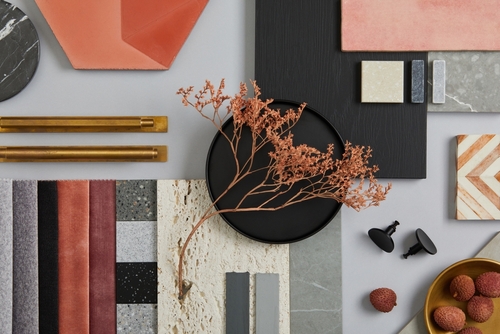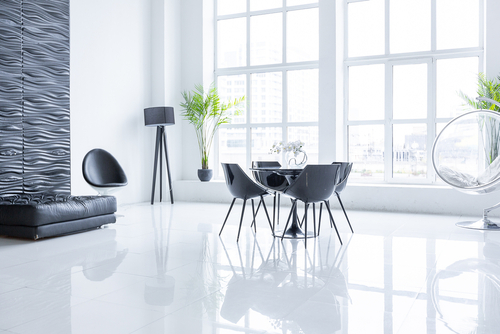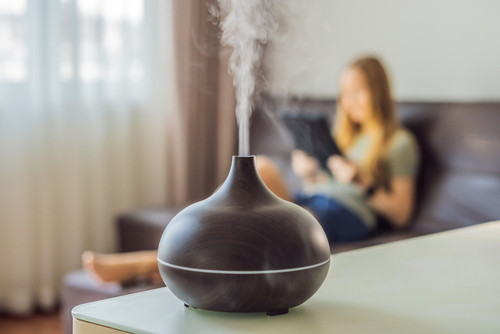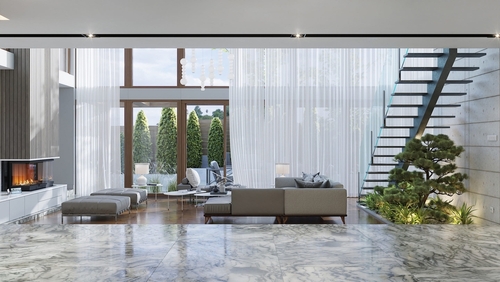How to Use Texture in Interior Design
Imagine the most boring room you can think of. It’s probably sparsely furnished and lacks any decorative elements. In a word, it’s flat.
Contrast that with the most interesting room you can think of. Maybe plush couches, velvet drapes, and huge ferns come to mind. Or maybe you’re picturing a sleek and minimalist space with monstera plants, bold geometric artwork, and a white, plush rug adding interest.
What takes these rooms from boring to vibrant? Texture. Adding texture to your interior design has the power to bring depth and intrigue to even the most modest of spaces. Here are some design tips to get started with adding texture to your home’s decor.
What is texture in interior design?
Texture in interior design refers to the surface quality or feel of the materials you incorporate into your room’s decor. These are the elements that add dimension, depth, and sensory experience to a space.
But It's not just about aesthetics; it's about engaging your senses and creating a space that feels inviting, layered, and full of character. Adding some well chosen texture to your room can transform it from functional to captivating, adding personality, depth, and a touch of magic.
Where can texture be placed?
Simply put, you can add texture to your interior design in every room of your home. A few small touches like an accent rug or a few strategically placed pieces of wall art can make even the smallest room come to life with texture.
Consider the following ideas for bringing an extra bit of texture to each room in your home:
Living room. Introduce softness with plush throws and pillows, warmth with textured furniture upholstery, and visual interest with patterned rugs and woven wall hangings.
Bedroom. Create a cozy haven with a nubby wool rug, layered throws and blankets, and tactile bedding.
Kitchen. Add natural warmth with exposed brick walls or wood finishes, and consider textured ceramic tiles for the backsplash or countertops.
Bathroom. Introduce spa-like luxury with stone countertops, plush towels, and woven baskets for storage.
Hallway. Break up monotony with a statement wallpaper or textured paint finish, and add a runner rug for added depth.
Types of texture in interior design
Tactile texture
Tactile texture influences the way a space feels to the touch and contributes to your overall sensory experience. These textures invite interaction, making the room more intimate and comfortable.
Smooth surfaces, such as polished marble countertops or glass tabletops, convey a sense of refinement and modern elegance. They create a sleek, sophisticated atmosphere that can enhance the visual appeal of contemporary spaces.
Conversely, rough textures introduce a touch of the organic and raw, fostering a connection with nature. Unpolished stone, exposed brick walls, or thick woven rugs provide a tactile experience that imbues a space with a rustic charm and tangible sense of history.
To round out the textural experience, soft textures, such as those found in plush wool rugs, velvety upholstery, or luxurious bedding, create an environment of comfort and coziness. These elements encourage you to relax, unwind, and indulge in the sensory richness of your surroundings.
Visual texture
Visual texture is the interplay of patterns, finishes, and materials that adds visual interest and breaks up monotony, preventing spaces from feeling flat or one-dimensional.
Patterned fabrics—such as intricate damasks, bold stripes, or playful polka dots—introduce visual texture to elements like window treatments, blankets, and throw pillows. These playful patterns serve as decorative elements and also contribute to the overall design narrative, injecting your personality into the space.
Wall treatments, including textured wallpapers or faux finishes, are another avenue through which interior designers can introduce visual texture. Raised patterns, embossed designs, or even murals can captivate the eye, turning a plain wall into a work of art.
These elements guide the eye, define focal points, and create a sense of flow, transforming hallways into galleries and living rooms into inviting conversation zones.
Unexpected textures
Texture isn't just about touch and sight. Curating a unique feel in your space can be achieved through some unexpected textural elements.
Sound plays a big role here. The soft rustle of silk curtains or the crackling of a fireplace can add another layer of sensory richness to a space. On the flip side, acoustic panels, designed to absorb sound, are great at reducing echoes. Because we associate echos with large, flat surfaces, the controlled auditory environment can make your space feel softer and more intimate.
Even scent can evoke a sense of texture without physical contact. For example, the scent of lavender may evoke a smooth, serene sense of calmness and relaxation.
How to add texture in interior design
Dynamic lighting. Changing or moving lights, such as color-changing LEDs or moving light fixtures, contribute to your room’s texture by creating an ever-evolving progression of dramatic shadows. This is a fun and unexpected way to create a dynamic and ever-changing visual atmosphere.
Layered rugs. Place different rugs with varying textures on top of each other. For example, layer a plush wool rug over a natural fiber rug to add depth and warmth to your floor.
Natural materials. Incorporate natural textures such as stone, wood, or bamboo to create a rough but inviting feel. Wooden furniture, exposed brick walls, and stone countertops are all effective ways to add an organic authenticity.
Sheer drapes. Add light colored, translucent drapes to your windows. These gauzy window treatments will catch the sunlight and create faint shadows that play across the wall as the sun moves through the sky.
Textured paint techniques. Experiment with paint techniques like stippling, sponging, or rag rolling to create textured finishes on walls. This adds a subtle but effective visual texture.
Plants. The natural texture of plants is a welcome addition to every interior design style. Whether through potted plants, hanging planters, or a vertical garden, greenery adds a refreshing textural element.
Add a rug that feels right
The deliberate incorporation of diverse textures into interior design is an artful way to elevate the ambiance of a space. By thoughtfully selecting and juxtaposing materials that engage the sense of touch, you can create an environment that is visually captivating and also provides a multisensory experience.
To add some delightful texture to your floor, consider adding a rug. You can find the rug with the exact texture for your space among our wide selection of custom rugs.






